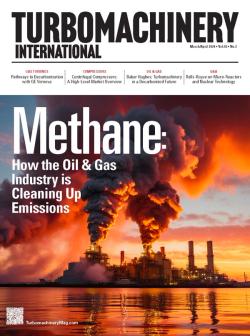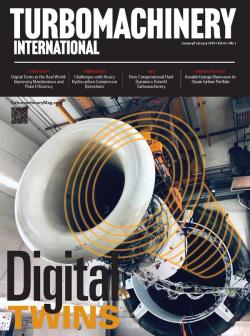
OR WAIT null SECS
© 2024 MJH Life Sciences™ and Turbomachinery Magazine. All rights reserved.
SPECIFYING GEAR UNITS FOR HIGH-SPEED TURBOMACHINERY
Gear units play a critical role in the speed matching of high-speed turbomachinery. Over the years, however, there have been gear unit failures due to gear tooth surface pitting, various types of wear and breakage. If the wear rate is relatively low, gear wear can be allowed to continue for a long period of time. Progressive pitting, though, can result in high vibration as well as high mechanical and thermal loading. This can eventually destroy gear sets. Wear and pitting need time to reach a level that can result in a catastrophic failure. Both can be detected by condition monitoring. However, sudden breakage due to bending loads can result in a failure without warning.
Commonly used specifications mandate a sufficient margin for gear tooth bending in order to prevent this type of unexpected gear failure. Additionally, the lubrication selection plays an important role in minimizing wear. Therefore, pay attention to viscosity grade, sufficient flow and other lubrication parameters.
Pitting margin
It may be difficult to provide an optimum margin for pitting. Increasing gear size or hardness are the main tools employed to achieve a better margin for pitting. However, both may cause other problems and lead to a sharp increase in cost. That is why it is important to understand a couple of concepts with regard to hardness design (related to the material and heat treatment) for gear units used in high-speed applications:
• Medium-range hardness gears: These are not sensitive to operational error and wear before gear failure. Noise levels increase with wear, so this can be used as an indication for wear and impending failure
• Very hard gears: These gear units are used in some compact, high-speed designs with high-power density. Very hard gears are more susceptible to scuffing because of high-load intensity and their sliding velocity. The helix angle should be selected for optimum performance, a minimum overlap ratio and superior load sharing.
Axial load is also a function of helix angle, particularly for single-helical gears, which result in a relatively lower angle in a single-helical gear unit design. As a rule of thumb, the single-helical helix angle should be between 5° to 22°; the double-helical angle is best between 18° and 45°.
Lubrication and Design
Because of high metal-to-metal contact pressures, gear units strongly depend on proper lubrication and operation. Contact pressures could further increase due to various operation errors, such as misalignment, different degradations and loss of the oil’s lubrication properties. For high-speed gear units, less than 30% of the oil is used for lubrication and around 70% (or sometimes more) employed for cooling. For gear units working at high speeds and high loads, relatively heavy lubricants (say above VG 100) are commonly used.
A proper casing design is a key for gear unit reliability and performance. An optimum clearance should be ensured around the gears (and between the gears and casing) to avoid oil choking. A correct thermal design is also important. Uniform temperature patterns should be maintained for gears and casing.
It is critical to limit thermal distortion. The gear housing and the mounting type and supports of the gear unit are important considerations for performance and reliability. The gear unit casing should also be sufficiently rigid to ensure low deflections under load to properly maintain the alignment.
Generally the same oil (as the job oil) should be used for flushing at the pre-commissioning stage. The oil is drained and fresh oil is used for commissioning, start-up and the first day of operation. Again, the oil is drained (after 24-hours operation under load) and fresh oil is filled for the first six months of operation. Oil analysis is the best tool to identify an optimum oil change interval. Usually this interval is between six-months and two years.
Generally, it is important to consider the effects of all the machinery on a gear unit train. In reality, some failures are because of external equipment effects on the gear unit. The gear unit manufacturer is typically less informed as to the equipment details of the train where the gear unit is to be installed.
Gear units
A common lubrication system for turbomachinery and the gear unit could be a reason for failure since the oil for the train is nearly always a compromise and functions as a poor lubricant for the gear unit.
Similarly, mounting and testing (including alignment and adjustment) of a gear unit into the equipment train is a precision job as this exerts a major impact on train operation and reliability. Poor alignment can lead to unequal distribution of gear tooth loads and distortion of the gears from moments. Even an expensive gear unit can be destroyed within half a day if it is improperly installed. Before start-up, then, the accuracy of gear-face contact must be checked. Usually, around 90% gear-face contact can be achieved.
However, some high-speed, high-load gear units (particularly those with hard gears) are produced with helix-angle modifications that take into consideration bending and torsional deflections (due to high loads). For these special gear units, less than 90% gear face contact may be acceptable. The alignment of high-speed gear units should also be checked under operating conditions. This is known as a hot-alignment check.



